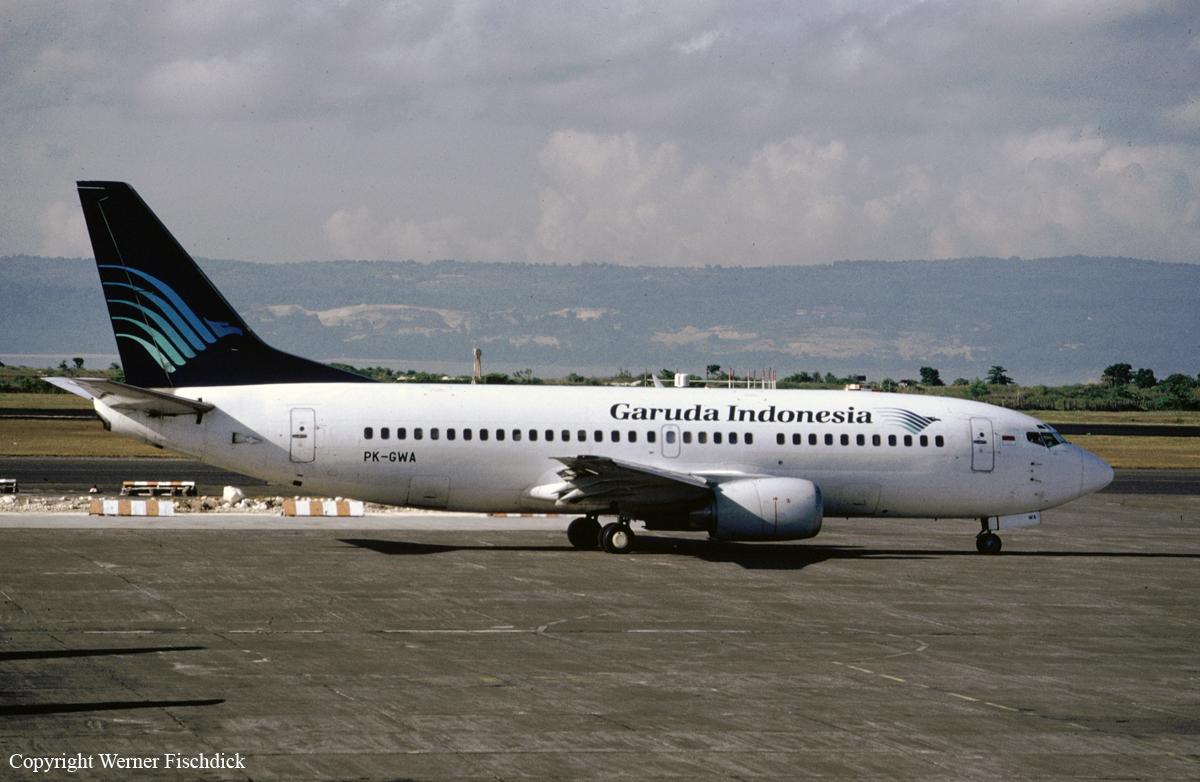Country
Operator Image

Crash of a Boeing 737-497 in Yogyakarta: 21 killed
Date & Time:
Mar 7, 2007 at 0758 LT
Registration:
PK-GZC
Survivors:
Yes
Schedule:
Jakarta - Yogyakarta
MSN:
25664
YOM:
1992
Flight number:
GIA200
Crew on board:
7
Crew fatalities:
Pax on board:
133
Pax fatalities:
Other fatalities:
Total fatalities:
21
Captain / Total hours on type:
3703.00
Copilot / Total hours on type:
1353
Aircraft flight hours:
35207
Aircraft flight cycles:
37360
Circumstances:
On 7 March 2007, a Boeing Company 737-497 aircraft, registered PK-GZC, was being operated by Garuda Indonesia on an instrument flight rules (IFR), scheduled passenger service, as flight number GA200 from Soekarno-Hatta Airport, Jakarta to Adisutjipto Airport, Yogyakarta. There were two pilots, five flight attendants, and 133 passengers on board. The pilot in command (PIC) and copilot commenced duty in Jakarta at about 21:30 Coordinated Universal Time (UTC), or 04:30 local time, for the flight to Yogyakarta. Prior to departing Jakarta, during the push back, the PIC contacted the ground engineers and informed them that the number-1 (left) engine thrust reverser fault light on the cockpit instruments had illuminated. The engineers reset the thrust reverser in the engine accessories unit and the fault light extinguished. The scheduled departure time was 23:00. The aircraft took off from Jakarta at 23:17, and the PIC was the pilot flying for the sector to Yogyakarta. The copilot was the monitoring/support pilot. During the cruise, just before top of descent, the crew was instructed by Jakarta Control to ‘maintain level 270 and contact Yogya Approach 123.4’. The copilot acknowledged; ‘contact Yogya 123.4, Indonesia 200’. The PIC started to give a crew briefing at 23:43 stating: ‘in case of holding, heading of 096’. The briefing was interrupted by a radio transmission from Yogya Approach, giving GA200 a clearance to Yogyakarta via airway W 17 for runway 09, and a requirement to report when leaving flight level 270. When radio communication was completed, the PIC continued with the crew briefing for an ILS approach, stating:
When clear approach ILS runway 09, course 088. (C) Frequency 1091, aerodrome elevation three hundred fifty, (C) leaving two thousand five hundred by 6 point 6 DME ILS, (C) to check four DME one thousand six hundred seventy, (C) crossing two DME one thousand thirty seven. Decision Altitude ILS Cat I, five eight seven, two three seven both set, approach flap forty, auto brake two. Speed one three six, one five one, two twenty. Timing from final approach-fix to VOR 6 DME. (C) With airspeed approximately one four one, two minutes thirty six. (C) In case localizer, MDA seven hundred, localizer, miss approach, at point six. (C) DME ILS India Juliet oscar golf. (C) On landing, to the left standby parking stand. Go-around missed approach climb one thousand five hundred turn left. To holding fix via Yogya VOR, continue climb four thousand feet, to cross Yogya at or above two thousand five hundred DME eight. (C).
Twelve minutes and 17 seconds later, Yogya Approach cleared GA200 ‘for visual approach runway zero nine, proceed to long final, report runway in sight’. The copilot acknowledged the clearance and asked for confirmation that they were cleared to descend to circuit altitude, Yogya Approach replied ‘descend to two thousand five hundred initially’. The crew informed the investigation that they were conducting an Instrument Landing System (ILS) approach to runway 09, in visual meteorological conditions (VMC). However they did not inform Yogya Approach or Yogyakarta Tower that they were flying the 09 ILS approach. At 23:58:10, the aircraft overran the departure end of runway 09 at Yogyakarta Airport. The PIC reported that as the aircraft was about to leave the runway, he shut down both engines. The aircraft crossed a road, and impacted an embankment before stopping in a rice paddy field 252 meters from the threshold of runway 27 (departure end of runway 09). The aircraft was destroyed by the impact forces and an intense, fuel-fed, post impact fire. There were 119 survivors. One flight attendant and 20 passengers were fatally injured. One flight attendant and 11 passengers were seriously injured.
When clear approach ILS runway 09, course 088. (C) Frequency 1091, aerodrome elevation three hundred fifty, (C) leaving two thousand five hundred by 6 point 6 DME ILS, (C) to check four DME one thousand six hundred seventy, (C) crossing two DME one thousand thirty seven. Decision Altitude ILS Cat I, five eight seven, two three seven both set, approach flap forty, auto brake two. Speed one three six, one five one, two twenty. Timing from final approach-fix to VOR 6 DME. (C) With airspeed approximately one four one, two minutes thirty six. (C) In case localizer, MDA seven hundred, localizer, miss approach, at point six. (C) DME ILS India Juliet oscar golf. (C) On landing, to the left standby parking stand. Go-around missed approach climb one thousand five hundred turn left. To holding fix via Yogya VOR, continue climb four thousand feet, to cross Yogya at or above two thousand five hundred DME eight. (C).
Twelve minutes and 17 seconds later, Yogya Approach cleared GA200 ‘for visual approach runway zero nine, proceed to long final, report runway in sight’. The copilot acknowledged the clearance and asked for confirmation that they were cleared to descend to circuit altitude, Yogya Approach replied ‘descend to two thousand five hundred initially’. The crew informed the investigation that they were conducting an Instrument Landing System (ILS) approach to runway 09, in visual meteorological conditions (VMC). However they did not inform Yogya Approach or Yogyakarta Tower that they were flying the 09 ILS approach. At 23:58:10, the aircraft overran the departure end of runway 09 at Yogyakarta Airport. The PIC reported that as the aircraft was about to leave the runway, he shut down both engines. The aircraft crossed a road, and impacted an embankment before stopping in a rice paddy field 252 meters from the threshold of runway 27 (departure end of runway 09). The aircraft was destroyed by the impact forces and an intense, fuel-fed, post impact fire. There were 119 survivors. One flight attendant and 20 passengers were fatally injured. One flight attendant and 11 passengers were seriously injured.
Probable cause:
Causes:
1) Flight crew communication and coordination was less than effective after the aircraft passed 2,336 feet on descent after flap 1 was selected. Therefore the safety of the flight was compromised.
2) The PIC flew the aircraft at an excessively high airspeed and steep descent during the approach. The crew did not abort the approach when stabilized approach criteria were not met.
3) The pilot in command did not act on the 15 GPWS alerts and warnings, and the two calls from the copilot to go around.
4) The copilot did not follow company instructions and take control of the aircraft from the pilot in command when he saw that the pilot in command repeatedly ignored warnings to go around.
5) Garuda did not provide simulator training for its Boeing 737 flight crews covering vital actions and required responses to GPWS and EGPWS alerts and warnings such as ‘TOO LOW TERRAIN’ and ‘WHOOP, WHOOP PULL UP’.
Other Factors:
1) The airport did not meet the ICAO Standard with respect to runway end safety areas.
2) The airport did not meet the ICAO Standard with respect to rescue and fire fighting equipment and services for operation outside the airport perimeter and in swampy terrain.
1) Flight crew communication and coordination was less than effective after the aircraft passed 2,336 feet on descent after flap 1 was selected. Therefore the safety of the flight was compromised.
2) The PIC flew the aircraft at an excessively high airspeed and steep descent during the approach. The crew did not abort the approach when stabilized approach criteria were not met.
3) The pilot in command did not act on the 15 GPWS alerts and warnings, and the two calls from the copilot to go around.
4) The copilot did not follow company instructions and take control of the aircraft from the pilot in command when he saw that the pilot in command repeatedly ignored warnings to go around.
5) Garuda did not provide simulator training for its Boeing 737 flight crews covering vital actions and required responses to GPWS and EGPWS alerts and warnings such as ‘TOO LOW TERRAIN’ and ‘WHOOP, WHOOP PULL UP’.
Other Factors:
1) The airport did not meet the ICAO Standard with respect to runway end safety areas.
2) The airport did not meet the ICAO Standard with respect to rescue and fire fighting equipment and services for operation outside the airport perimeter and in swampy terrain.
Final Report:
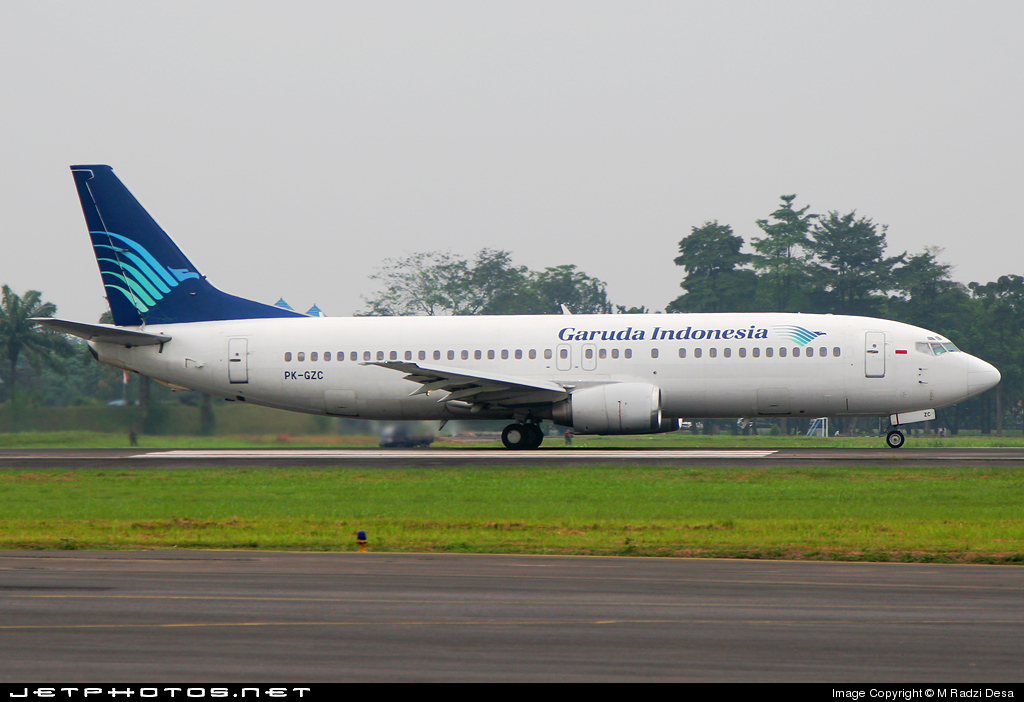
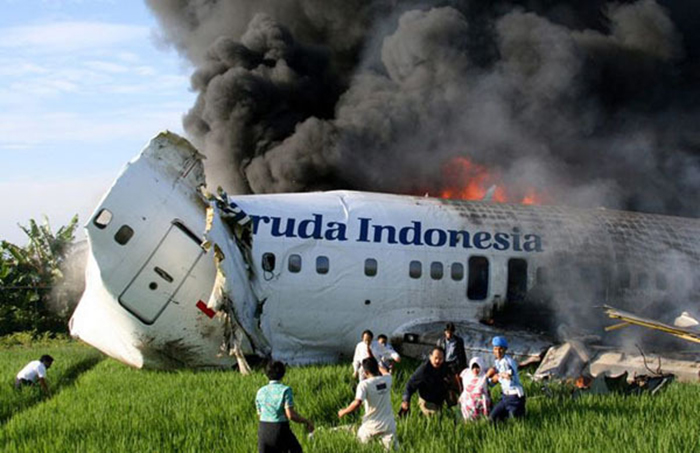
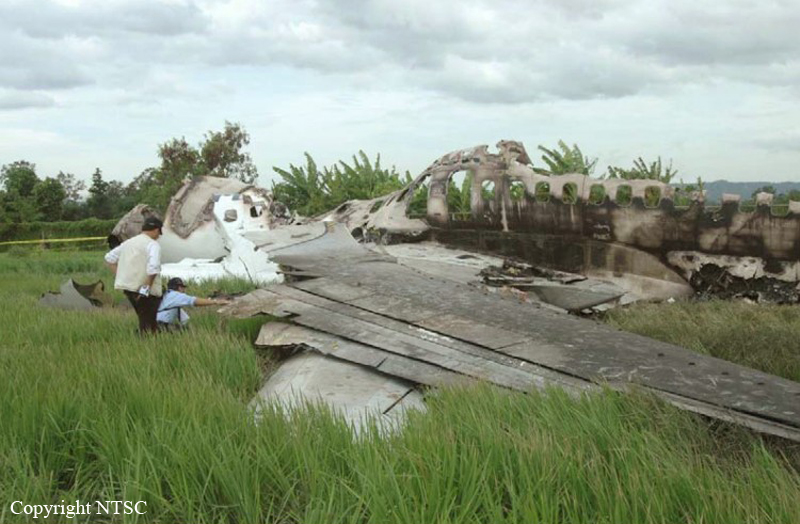
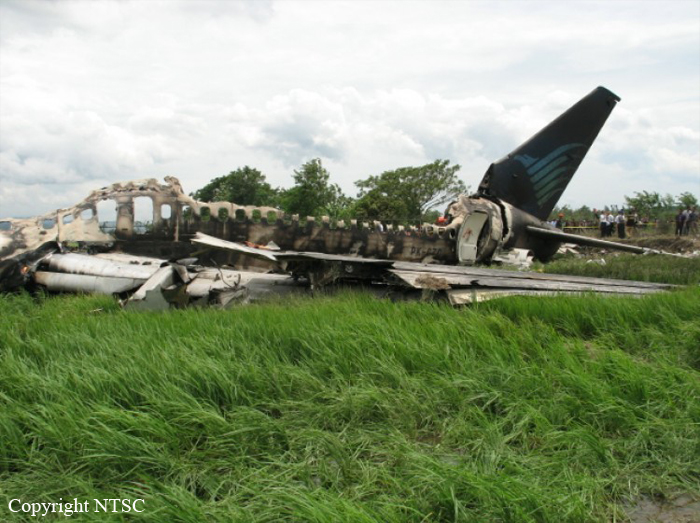
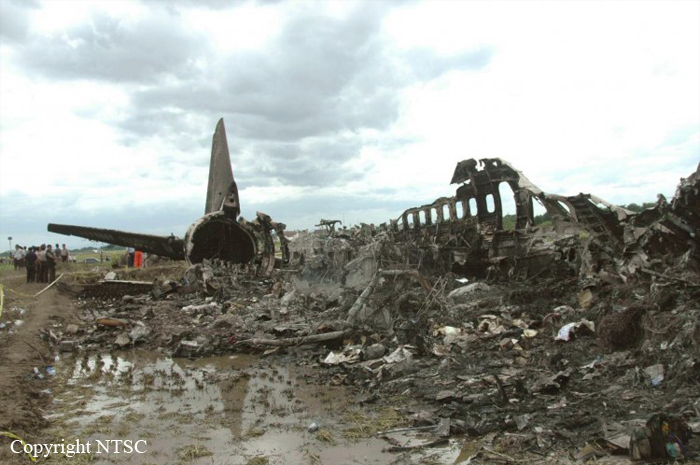
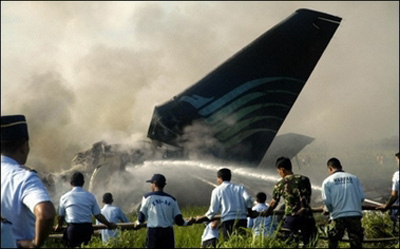
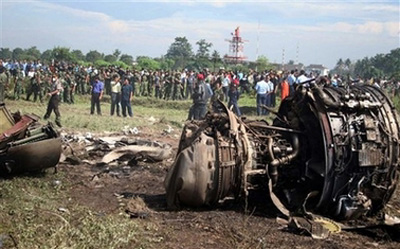
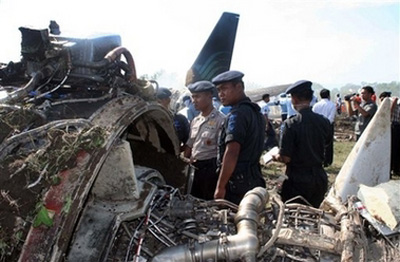
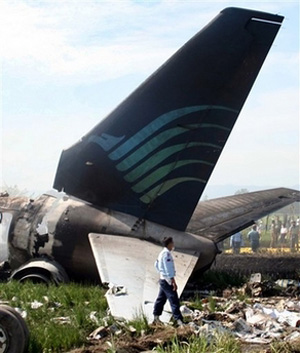
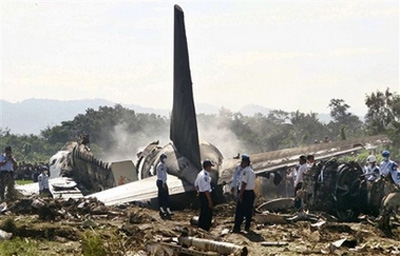
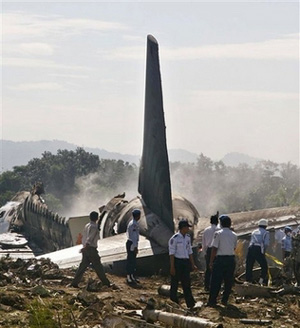
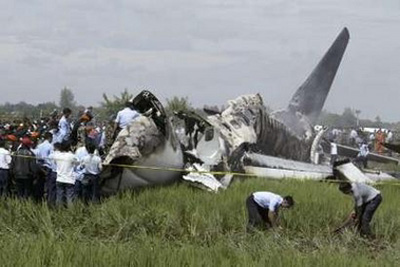
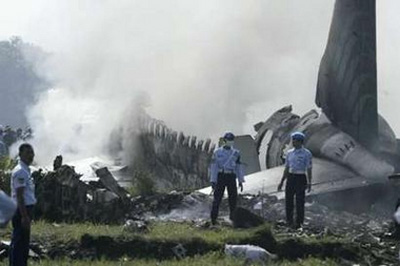
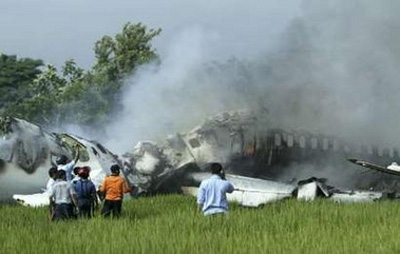
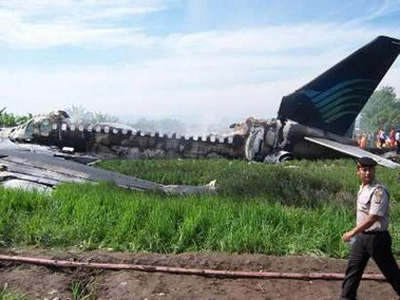
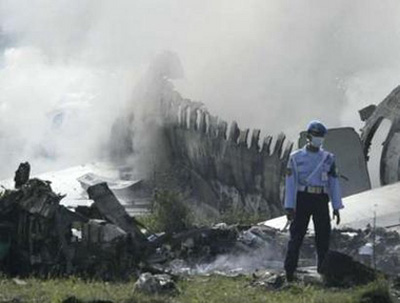
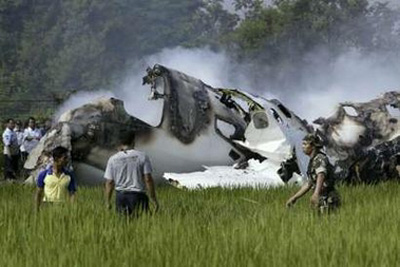
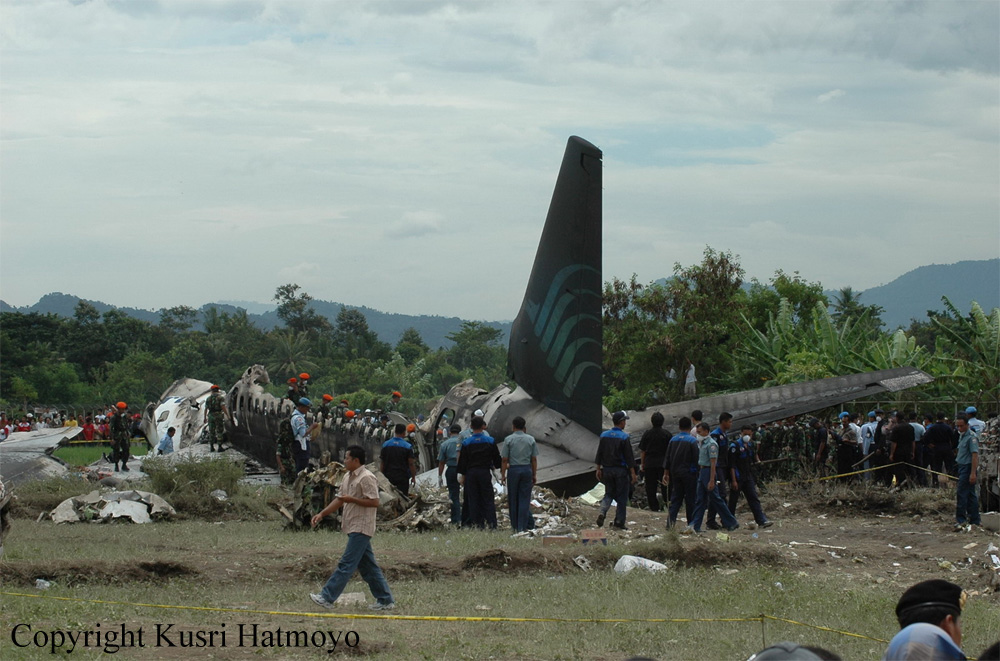
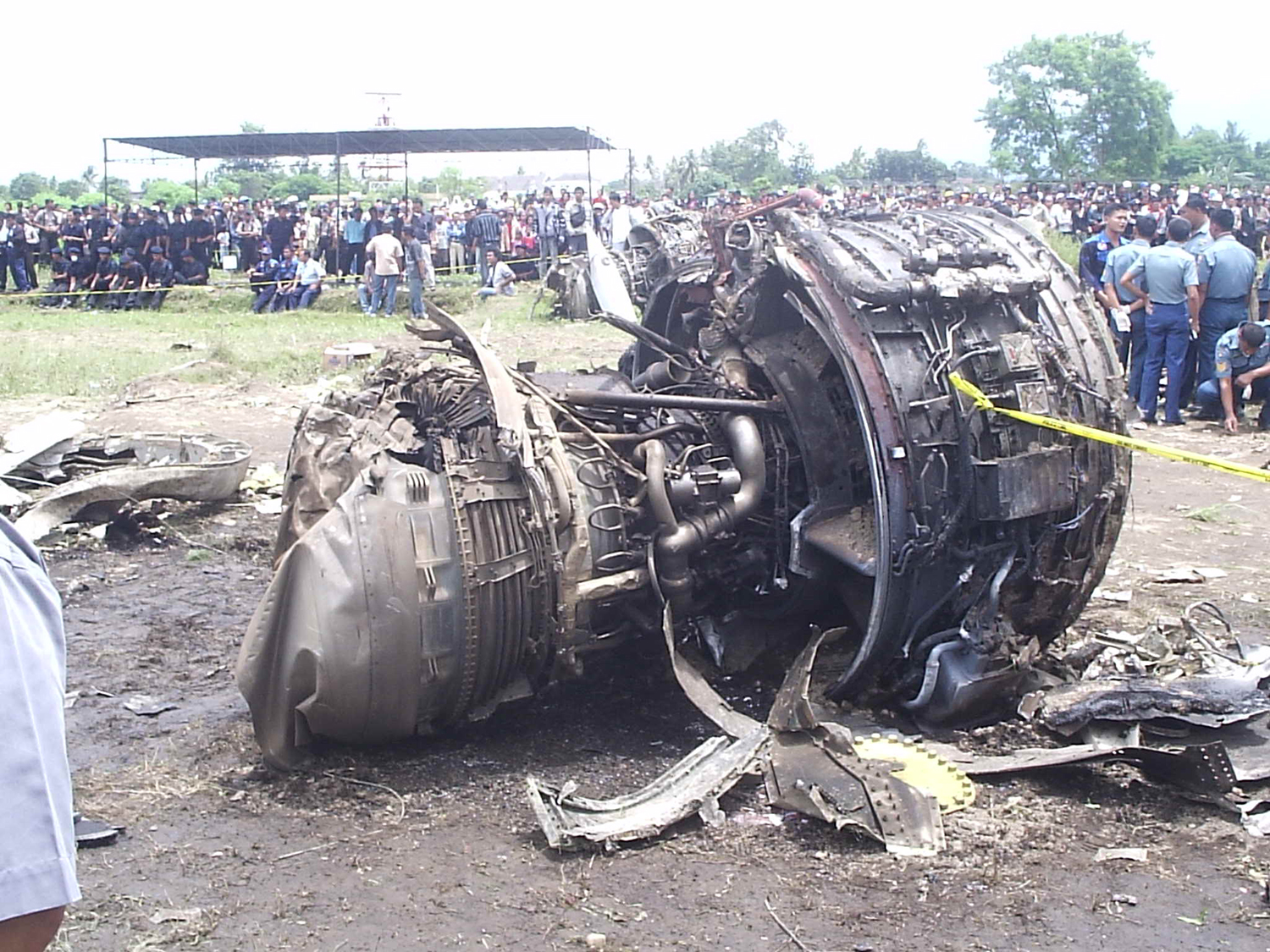
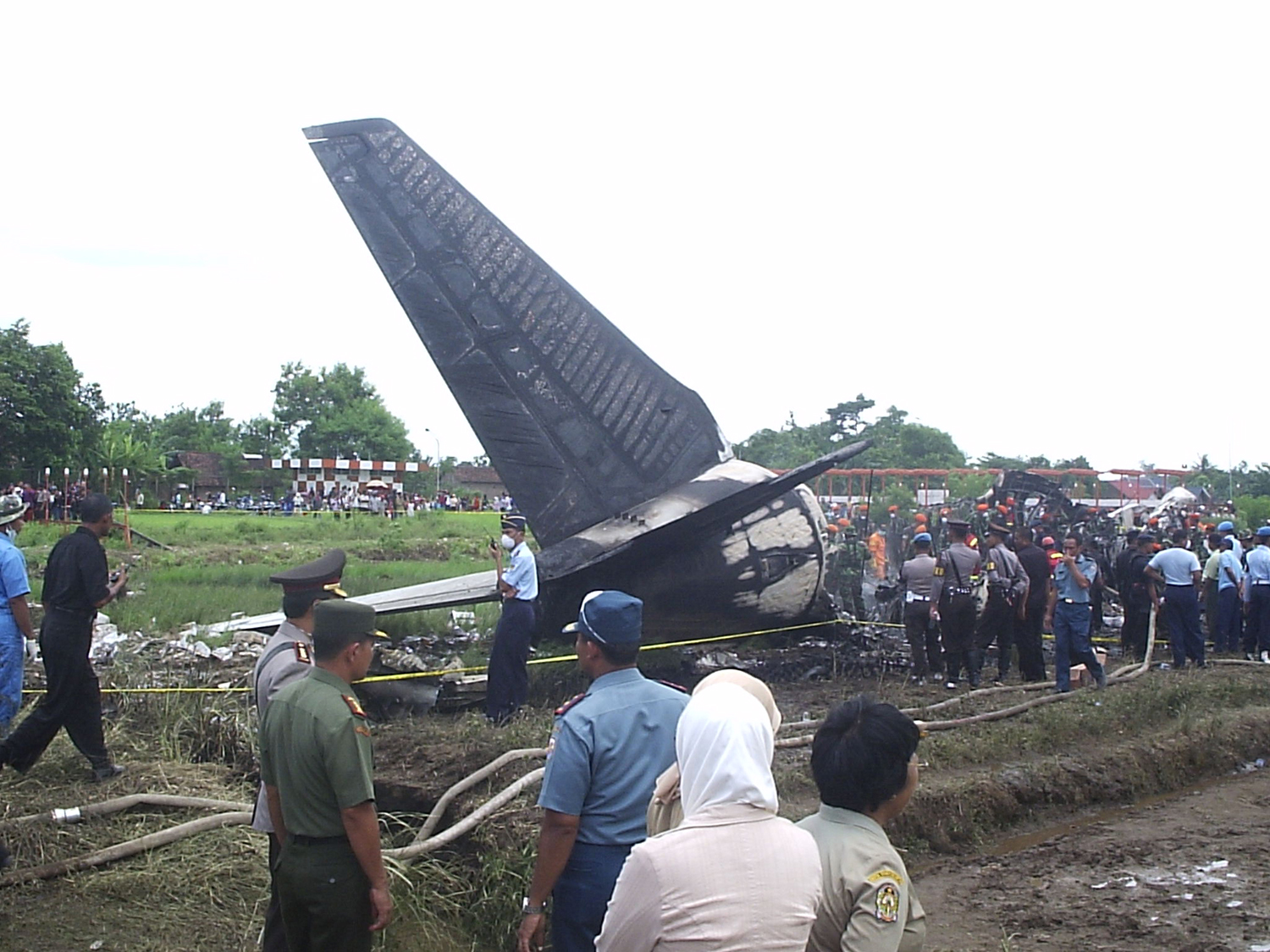
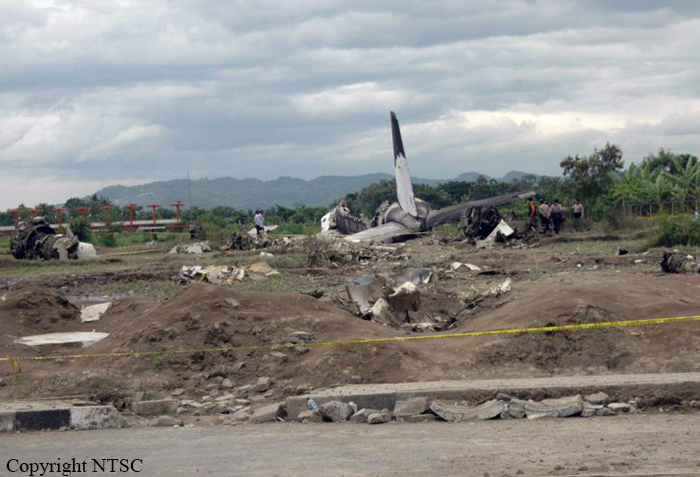
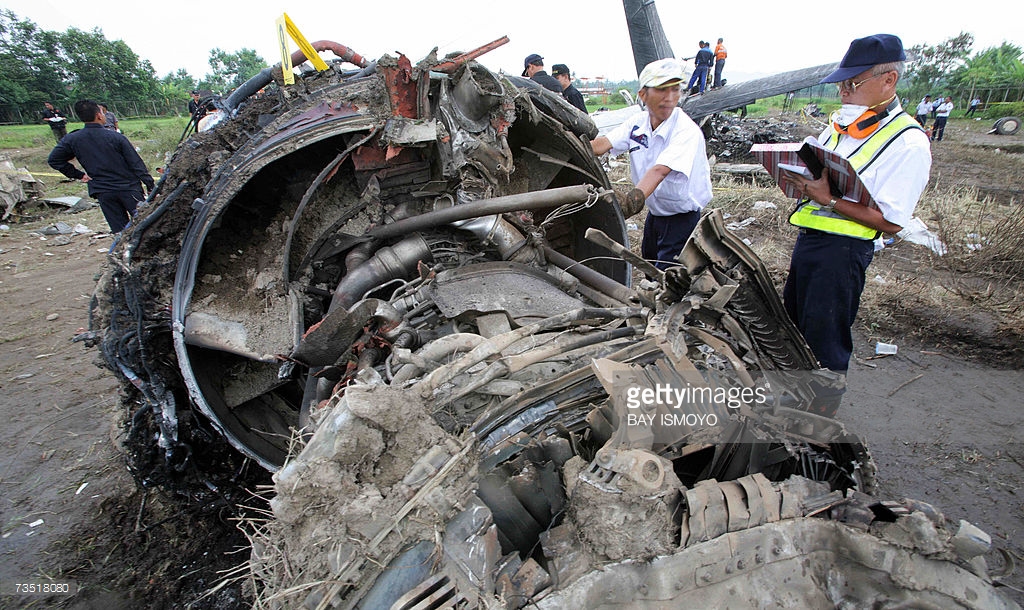
Crash of a Boeing 737-3Q8 in Yogyakarta: 1 killed
Date & Time:
Jan 16, 2002 at 1200 LT
Registration:
PK-GWA
Survivors:
Yes
Schedule:
Mataram-Jogjakarta
MSN:
24403
YOM:
1989
Flight number:
GA421
Crew on board:
6
Crew fatalities:
Pax on board:
54
Pax fatalities:
Other fatalities:
Total fatalities:
1
Aircraft flight hours:
27701
Aircraft flight cycles:
24139
Circumstances:
On January 16, 2002, at approximately 09:24 UTC, a Boeing 737-300, PK-GWA, ditched into the waters of the Bengawan Solo River, Central Java during a forced landing, following loss of power on both engines as the aircraft was descending through 19,000 ft. The dual engine flame out occurred shortly after the aircraft entered severe cumulonimbus cloud formations with turbulence and heavy rain and ice. The aircraft, owned and operated by PT Garuda Indonesia as Flight GA 421, had departed Ampenan at 08:32 UTC, on a regular scheduled commercial flight with destination Yogyakarta. At departure VMC conditions prevailed. The flight from Ampenan was reported uneventful until its arrival in the Yogyakarta area. The crew stated that they observed cumulonimbus cloud formations on their weather radar. The aircraft descended from cruise altitude of 31,000 ft to 28,000ft as instructed by BALI ATC at 09.08 UTC due to traffic on eastbound at FL290. As they began their descent from FL 280 at 09.13 UTC, prior to entering the clouds at 23,000 feet, the crew noted at the radar screen red cells with two green and yellow areas to the left and right of their intended flight path. The Pilot Flying decided to take the left opening above PURWO NDB. The flight crew prepared to enter turbulence by setting turbulence speed at 280 knots, seatbelt on, engine ignitions on FLT and anti-ice on. Then the Pilot Flying requested to BALI ATC to descend to FL 190 and was cleared by Semarang APP at 09.13 UTC. Shortly after the aircraft entered the area covered by Cumulonimbus cells, the crew noted severe turbulence and heavy precipitation. According to the flight crew interview, the crew noted aircraft electrical power generators loss and they were only having primary engine instrument indications and captain flight instruments, which finally identified both engines flame-out. While in the precipitation, the flight crew attempted at least two engine relights, and one attempt of APU start. As the APU start was initiated, the crew noted total electrical loss of the aircraft. The aircraft descended into VMC conditions at about 8,000 ft altitude. The PIC spotted the Bengawan Solo River and decided to land the aircraft on the river. The crew announced to the flight attendant to prepare emergency landing procedure. The aircraft landed successfully between two iron bridges in the upstream direction, and came to a stop with its nose pointing to the right of the landing path. The aircraft settled down on its belly, with the wings and control surfaces largely intact, and was partially submerged. The evacuation following the landing was successful. Twelve passengers suffered injuries, the flight crew and two flight attendants were uninjured, one flight attendant suffered serious injuries, and another flight attendant was found in the waters of the river and fatally injured.
Probable cause:
The NTSC determines that the probable causes of the accident were the combination of:
1) The aircraft had entered severe hail and rain during weather avoidance which subsequently caused both engines flame out;
2) Two attempts of engine-relight failed because the aircraft was still in the precipitation beyond the engines’ certified capabilities; and
3) During the second attempt relight, the aircraft suffered run-out electrical power.
1) The aircraft had entered severe hail and rain during weather avoidance which subsequently caused both engines flame out;
2) Two attempts of engine-relight failed because the aircraft was still in the precipitation beyond the engines’ certified capabilities; and
3) During the second attempt relight, the aircraft suffered run-out electrical power.
Final Report:
